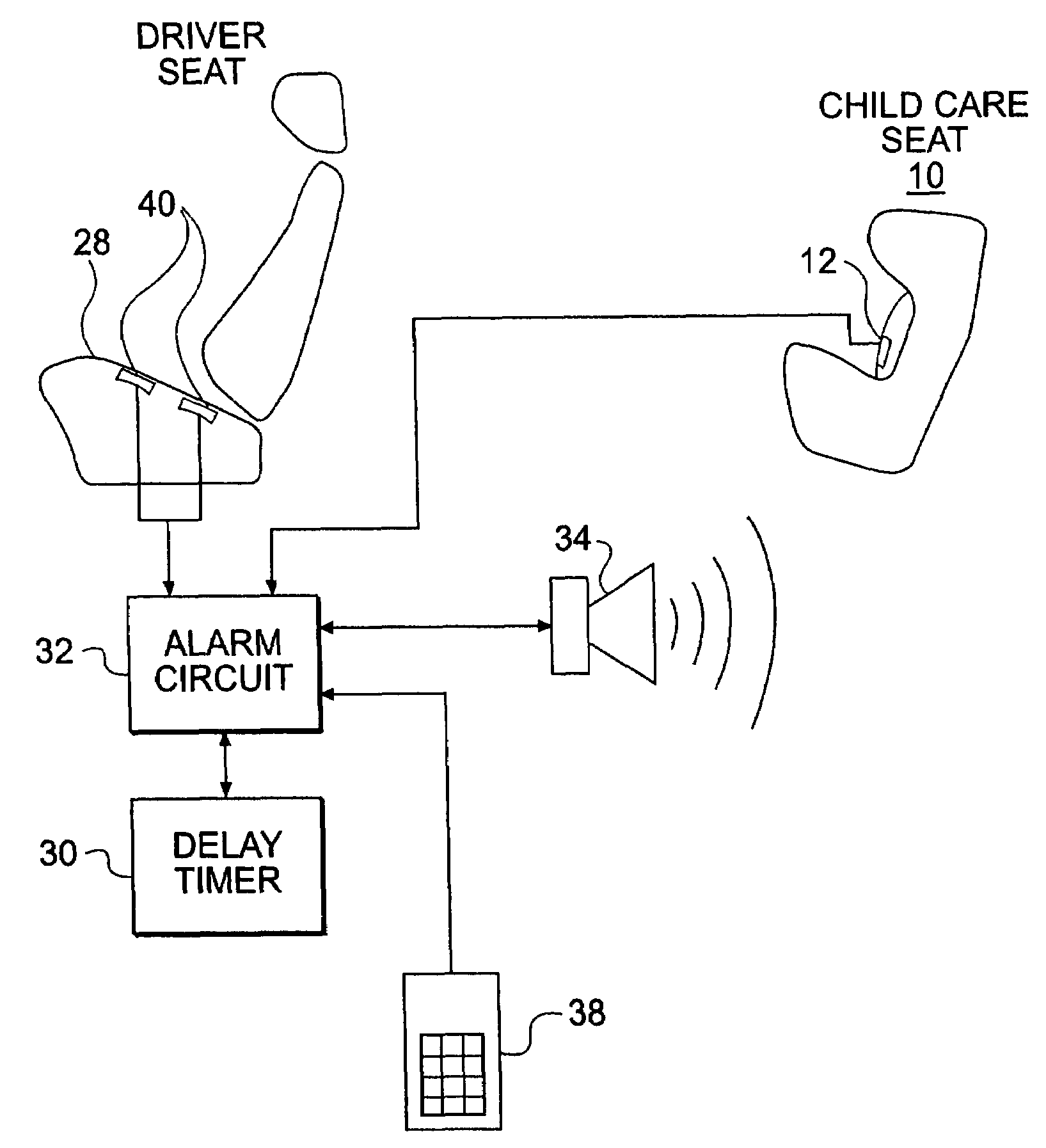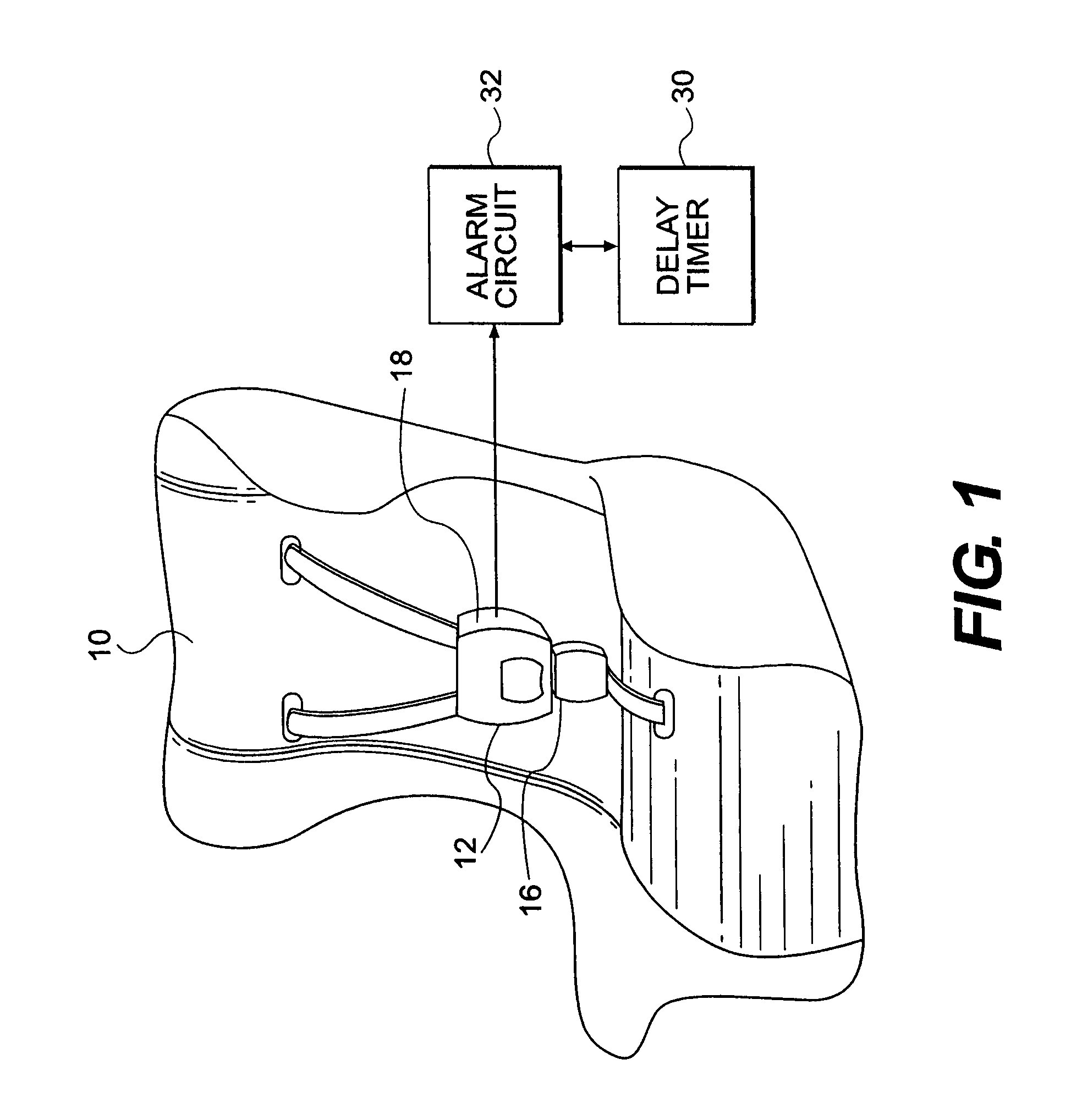Child occupancy detection system
a technology of occupancy detection and child, applied in the field of child safety and security systems, can solve problems such as inability to account for the prior ar
- Summary
- Abstract
- Description
- Claims
- Application Information
AI Technical Summary
Benefits of technology
Problems solved by technology
Method used
Image
Examples
Embodiment Construction
[0017]With reference to the figures, like reference characters will be used to indicate like elements throughout the several embodiments and views thereof. In particular, with reference to the figures, the present invention is directed to a system for notifying a driver that he or she left a child in the car that is relatively simple to activate and de-activate.
[0018]Referring to FIG. 1, when the child is belted into the car seat 10 the system and in particular the alarm circuit 32 is activated or set so as to warn of the presence of the child under predetermined conditions. The alarm circuit 32 can be activated in either the seat belt device 12 of the child car seat 10 or the rear passenger seatbelt device 20 (FIG. 2). A delay timer 30 either by itself or in conjunction with the alarm circuit 32 monitors the status of the driver being out of the vehicle giving the driver enough time to either re-enter the vehicle, conduct small activities around the vehicle, or get the child out of...
PUM
 Login to View More
Login to View More Abstract
Description
Claims
Application Information
 Login to View More
Login to View More - R&D
- Intellectual Property
- Life Sciences
- Materials
- Tech Scout
- Unparalleled Data Quality
- Higher Quality Content
- 60% Fewer Hallucinations
Browse by: Latest US Patents, China's latest patents, Technical Efficacy Thesaurus, Application Domain, Technology Topic, Popular Technical Reports.
© 2025 PatSnap. All rights reserved.Legal|Privacy policy|Modern Slavery Act Transparency Statement|Sitemap|About US| Contact US: help@patsnap.com



